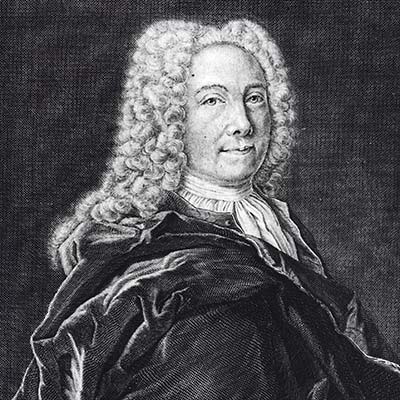Emanuel Swedenborg
Emanuel Swedenborg (1688–1772) was one of the greatest scientists of his time. He published many sketches for groundbreaking inventions, including an early aircraft. In the mid-1740s, Emanuel Swedenborg became interested in spiritual matters and his reputation as a scientist suffered as a result. His scientific contributions did not begin to be rediscovered until the 20th century.

Childhood and studies
Emanuel was a scientist, philosopher and one of the foremost researchers of his time. He was born in Stockholm in 1688. His father, clergyman Jesper Svedberg, so impressed King Charles XI of Sweden with his sermons that the king appointed him Bishop of Skara and professor in theology at Uppsala University. Emanuel’s mother, Sara Behm, came from a wealthy mining family.
Emanuel was a highly inquisitive child, but was also very much influenced by his father’s piety. Emanuel had a close relationship with his brother-in-law, Erik Benzelius, who was the university librarian at Uppsala University and had a great interest in academic studies and natural science. It was very likely Benzelius´ influence that led Emanuel to pursue natural science and begin studying at Uppsala University. After his studies at university, Emanuel spent five years abroad, first in London and Oxford in England and then in Paris and the Netherlands. He studied natural science, astronomy, mathematics and mechanics and enjoyed meeting with skilled craftsmen.
He became very inspired by the scientific academies that had been founded in England and France and believed that these types of schools should also be established in Sweden. Emanuel also wanted to start a scientific journal.
Contact with Polhem and Daedalus Hyperboreus
In 1715, Emanuel returned to Sweden and came into contact with Christopher Polhem, the most famous Swedish inventor of that time. Emanuel’s knowledge and skills also came to the notice of King Charles XII of Sweden. He was appointed assessor-extraordinary to the Swedish Board of Mines (Bergskollegium) and worked as Polhem’s assistant. In 1716, Emanuel started Sweden’s first scientific journal, Daedalus Hyperboreus, which published essays by Christopher Polhem and Emanuel Swedenborg. Instead of being written in Latin, the accepted scientific language of that time, the journal published its essays in Swedish. This was a novel concept, but one that meant that the essays were not widely read outside Sweden. Only six editions of Daedalus Hyperboreus were published from 1716 to 1717 (these editions are part of the National Museum of Science and Technology collections). The journal then went out of publication, likely due to a lack of funds. But Emanuel was also busy with other engineering projects, including a machine for transporting Swedish battleships overland from Strömstad to Idefjorden.
He was granted a title of nobility by the king in 1719 and his surname was changed from Svedberg to Swedenborg.
Swedenborg’s scientific work
Emanuel Swedenborg published a number of scientific works. “Beskrivning över svenska masugnar och deras blåsningar” (“Description of Swedish Blast Furnaces and Their Methods of Blasting Air”), a study of blast furnace construction and methods for iron smelting, came out in 1717. His most famous scientific work was entitled Opera Philosophica et Mineralia, the last two volumes of which dealt with metallurgy and copper and iron working. Published in 1734, it was the most extensive scientific work on this subject of its time.
Many of Emanuel Swedenborg’s ideas were groundbreaking. His essays depict, among many other things, a submarine, an automatic weapon and a universal musical instrument. He studied the human brain and is generally credited with being the first to propose the idea that certain areas in the brain control our speech and our movements. Yet another impressive example is his sketch of a flying machine, “A Machine to Fly in the Air,” which was published in 1716. Emanuel Swedenborg’s flying machine differed from those that had been proposed previously, which were based on moveable wings and mimicked the flight of birds. Swedenborg’s flying machine had a stationary oval design with a cockpit underneath. The cockpit also contained a propeller-like construction that would propel the aircraft forward.
Swedenborg’s transformation
In the mid-1740s, Emanuel Swedenborg began to experience strange dreams and visions. He became increasingly interested in spiritual matters and decided to dedicate his career to the study of theology and philosophy. Over the remainder of his life, he published a great number of philosophical and theological works, many describing his visions. This transformation meant that his scientific contributions became largely forgotten. It was not until the 20th century that his scientific work became rediscovered.
Emanuel Swedenborg died in London in 1772 at age 84. He was buried in the Swedish Church in London. In 1908, his remains were returned to Sweden and buried in the Uppsala Cathedral.
Last updated 21 February 2024.
